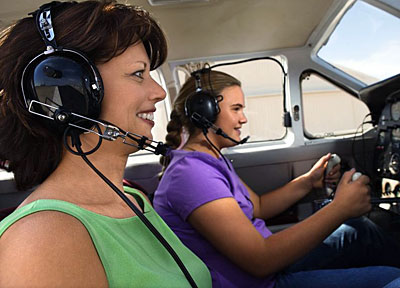Full-Flight Simulators
Feedsee Aviation : Full-Flight Simulators : Visual system uses satellite imagery and weather effects to produce highly realistic training scenarios
Flight simulators are an essential tool in training pilots. They offer a safe and controlled environment where pilots can practice and learn without the risks associated with actual flight.
 In 2006, CAE provided full-flight simulators: a Boeing 777ER and an A330/340 for Jet Airways of India and a Boeing 777-300 ER for Air Canada. Both contracts included a suite of CAE Simfinity training devices. In addition to the Boeing 777 extended range simulator and the Airbus A330/340 convertible simulator for Jet Airways, CAE provided a CAE Simfinity Integrated Procedures Trainer for the B777 as well as a CAE Simfinity Maintenance Flight Training Device for the A330/340. Both the B737NG simulators, and the new B777ER and A330/340 simulators, featured the CAE Tropos visual system which used satellite imagery as well as advanced weather and lighting effects to produce highly realistic training scenarios for pilots.
In 2006, CAE provided full-flight simulators: a Boeing 777ER and an A330/340 for Jet Airways of India and a Boeing 777-300 ER for Air Canada. Both contracts included a suite of CAE Simfinity training devices. In addition to the Boeing 777 extended range simulator and the Airbus A330/340 convertible simulator for Jet Airways, CAE provided a CAE Simfinity Integrated Procedures Trainer for the B777 as well as a CAE Simfinity Maintenance Flight Training Device for the A330/340. Both the B737NG simulators, and the new B777ER and A330/340 simulators, featured the CAE Tropos visual system which used satellite imagery as well as advanced weather and lighting effects to produce highly realistic training scenarios for pilots.
How flight simulators are used in pilot training
- Basic Flight Training: Flight simulators are used for initial pilot training to teach the basic principles of flight before the student pilot actually flies a real airplane. They learn how to control the aircraft, use the instruments, and respond to the airplane's movements.
- Procedure Training: Flight simulators allow pilots to learn and practice standard operating procedures. These procedures include pre-flight checks, taxiing, takeoff, in-flight navigation, landing, and post-flight checks.
- Emergency Scenario Training: One of the most important uses of flight simulators is training pilots how to handle emergency situations, which could be dangerous or impractical to replicate in real flight. These scenarios include engine failures, hydraulic failures, electrical failures, extreme weather conditions, and other emergencies.
- Instrument Flight Rules (IFR) Training: Flight simulators are used extensively for IFR training, which involves flying an aircraft by relying solely on the instruments in the cockpit. Pilots practice navigating and landing the aircraft without visual references to the outside world.
- Flight Maneuver Training: Simulators are used to practice various flight maneuvers such as turns, climbs, descents, and stalls. This helps pilots understand how the aircraft will behave and how to control it during these maneuvers.
- Familiarization with Different Aircraft Types: Simulators can be configured to replicate the cockpit and flight characteristics of many different types of aircraft. This allows pilots to gain familiarity with different aircraft types without needing access to each physical airplane.
- Crew Resource Management (CRM) Training: Simulators can be used for CRM training, which focuses on communication, decision making, and leadership within the cockpit.
- Flight Examination: In many cases, flight exams can be taken on flight simulators. They are often used in the process of obtaining a type rating, which certifies a pilot to fly certain aircraft types.
The advancements in simulation technology have made modern flight simulators incredibly realistic, reproducing not only the controls and instruments of the aircraft but also the environmental conditions and even the sensations of flight. They are now a critical part of pilot training, helping pilots to acquire and refine the skills they need to fly safely and effectively.